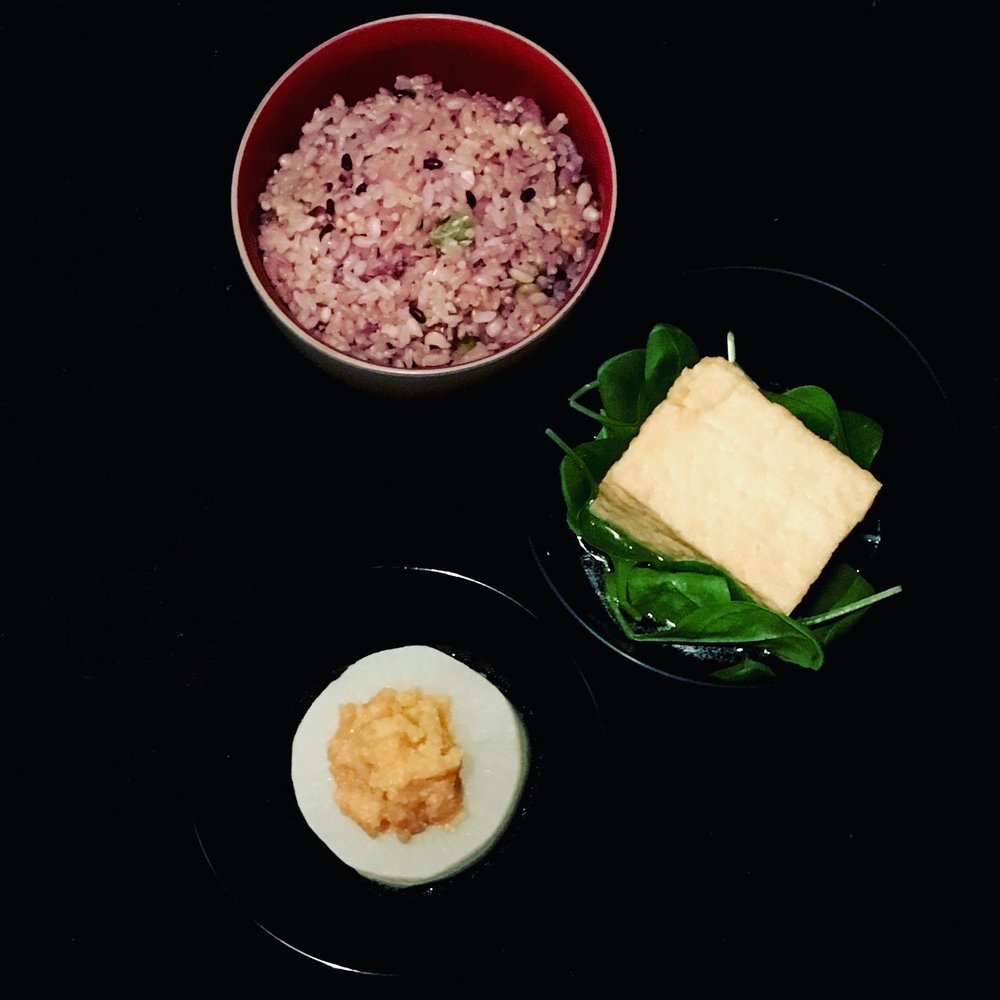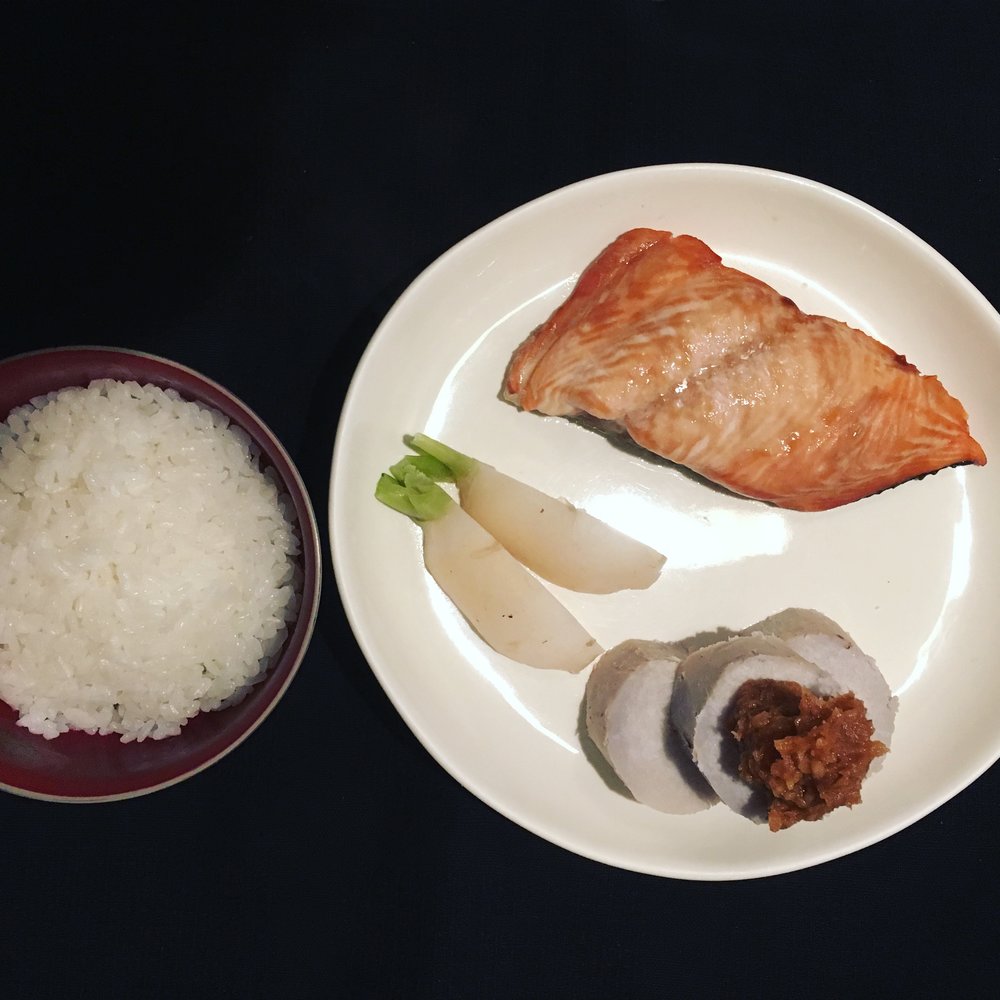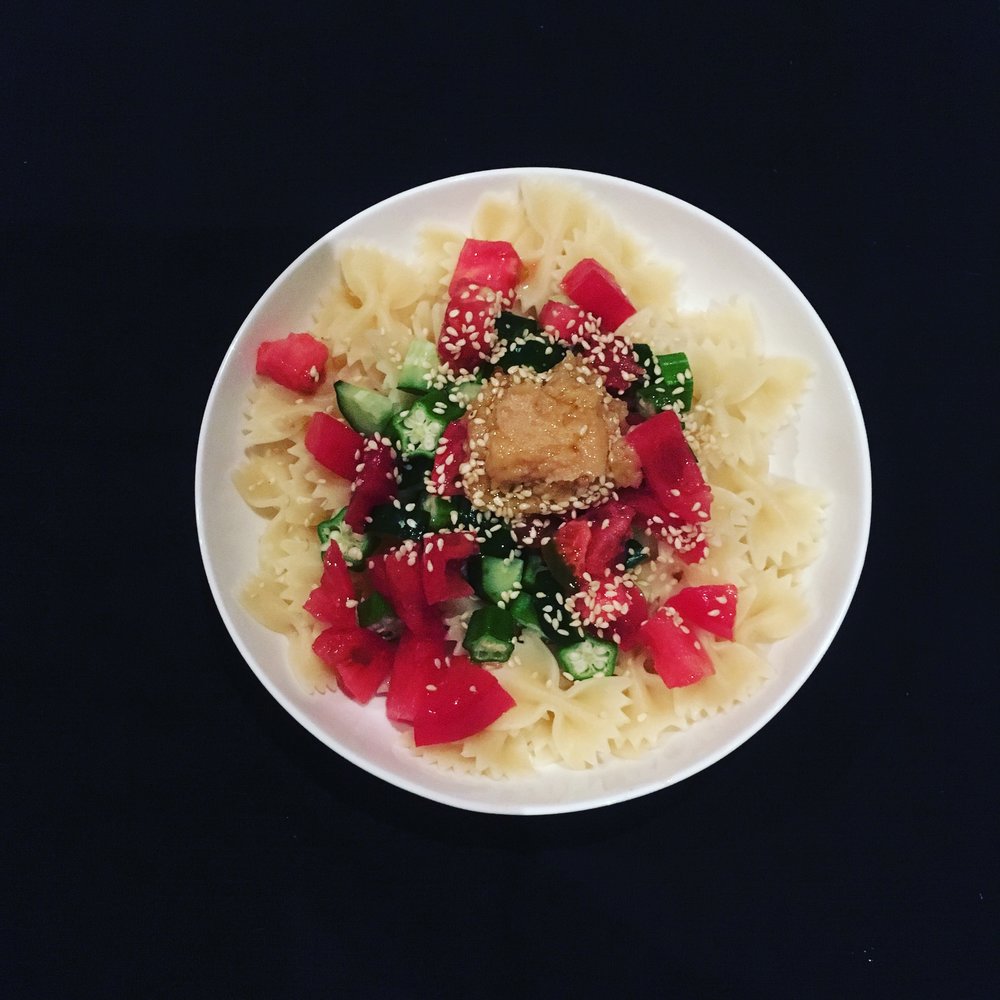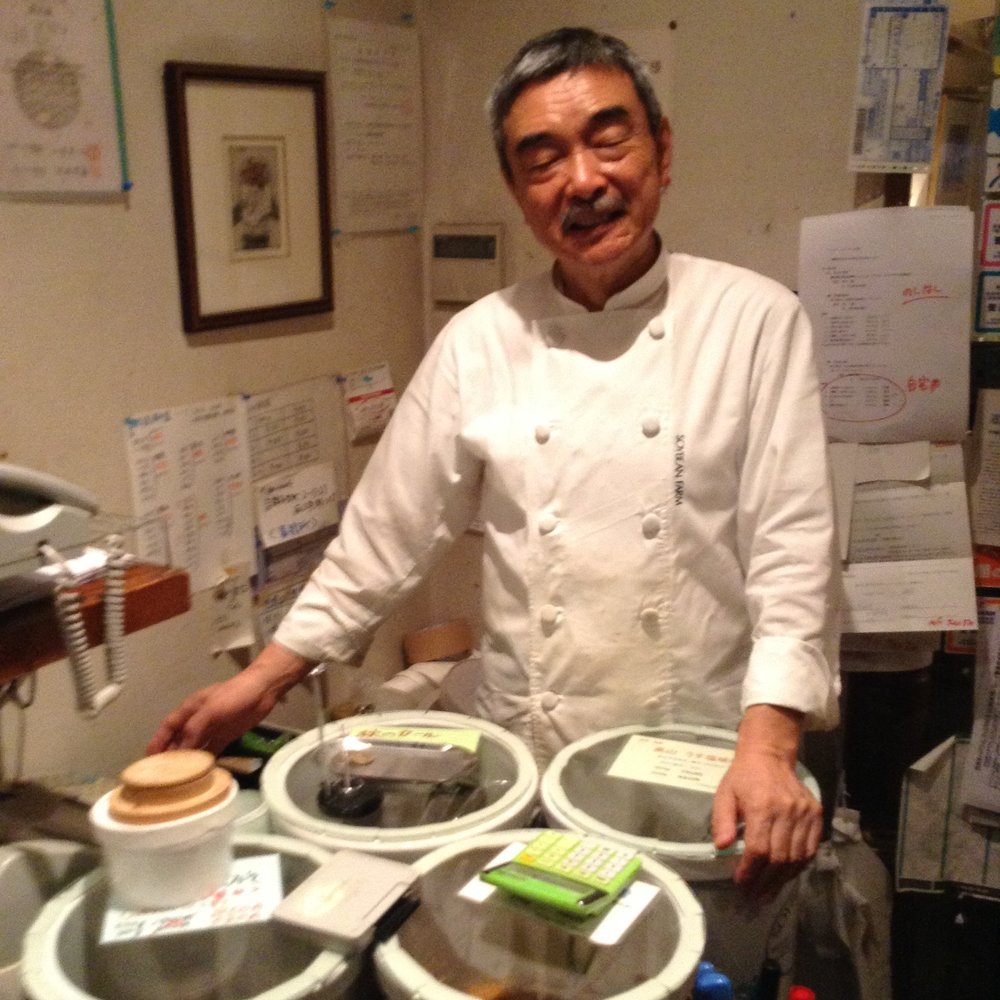The other day while browsing my IG feed, I saw the beautiful picture of grilled onigiri (rice balls) from my IG friend Junko @junkikat. And instantly I wanted to eat some. I love grilled miso onigiri, but for some obscure reason I never make some… Junko nicely gave me her recipe and I slightly adapted it to what I had in my fridge and my pantry. So here is what I did: first cook some Japanese rice. While it was cooking I prepare a mix of miso, I had only rustic granulous miso, so I used that one, 2 tsp. Then instead of the mirin I used a little bit of rice oil and vinegar, just a few drops. Vinegar can be replaced by a few drops of sake. And then added 1/2 tsp of sugar. Stir well to obtain a homogeneous mixture. Make the rice balls by taking 1/2 of rice in wet hand and shape them as you like with one flat surface for the miso. Spread the miso on the flat surface and then grill them in the oven or in a fry pan. I used the pan because I have a huge oven and I found that silly to turn it on just for that. So I flipped the onigiri miso side on the heated pan (grease it a bit if it is not anti-adhesive) and wait a few minutes until the miso starts to golden. Serve with what you like. For this time it was scrambled eggs and a simple salad with tomato, carrot and ice plant.











